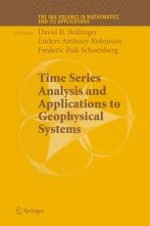Part of a two volume set based on a recent IMA program of the same name. The goal of the program and these books is to develop a community of statistical and other scientists kept up-to-date on developments in this quickly evolving and interdisciplinary field. Consequently, these books present recent material by distinguished researchers. Topics discussed in Part I include nonlinear and non- Gaussian models and processes (higher order moments and spectra, nonlinear systems, applications in astronomy, geophysics, engineering, and simulation) and the interaction of time series analysis and statistics (information model identification, categorical valued time series, nonparametric and semiparametric methods). Self-similar processes and long-range dependence (time series with long memory, fractals, 1/f noise, stable noise) and time series research common to engineers and economists (modeling of multivariate and possibly non-stationary time series, state space and adaptive methods) are discussed in Part II.
